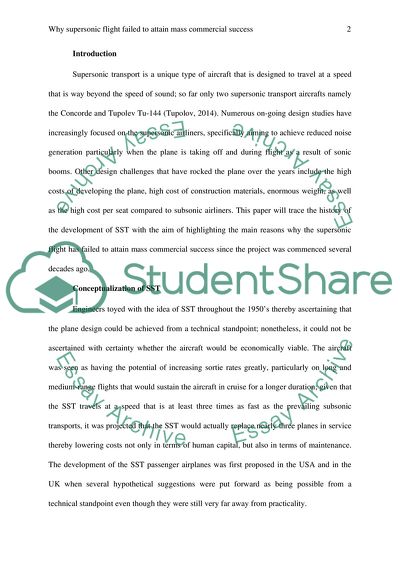Cite this document
(The Issue of Supersonic Flight Research Paper Example | Topics and Well Written Essays - 2000 words, n.d.)
The Issue of Supersonic Flight Research Paper Example | Topics and Well Written Essays - 2000 words. Retrieved from https://studentshare.org/technology/1828156-why-has-supersonic-flight-failed-to-attain-mass-commercial-success
The Issue of Supersonic Flight Research Paper Example | Topics and Well Written Essays - 2000 words. Retrieved from https://studentshare.org/technology/1828156-why-has-supersonic-flight-failed-to-attain-mass-commercial-success
(The Issue of Supersonic Flight Research Paper Example | Topics and Well Written Essays - 2000 Words)
The Issue of Supersonic Flight Research Paper Example | Topics and Well Written Essays - 2000 Words. https://studentshare.org/technology/1828156-why-has-supersonic-flight-failed-to-attain-mass-commercial-success.
The Issue of Supersonic Flight Research Paper Example | Topics and Well Written Essays - 2000 Words. https://studentshare.org/technology/1828156-why-has-supersonic-flight-failed-to-attain-mass-commercial-success.
“The Issue of Supersonic Flight Research Paper Example | Topics and Well Written Essays - 2000 Words”. https://studentshare.org/technology/1828156-why-has-supersonic-flight-failed-to-attain-mass-commercial-success.


